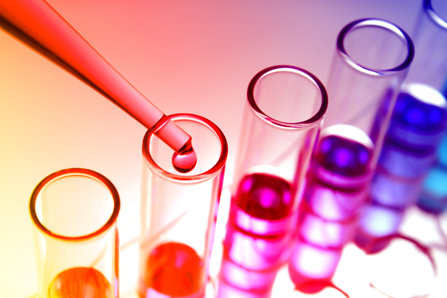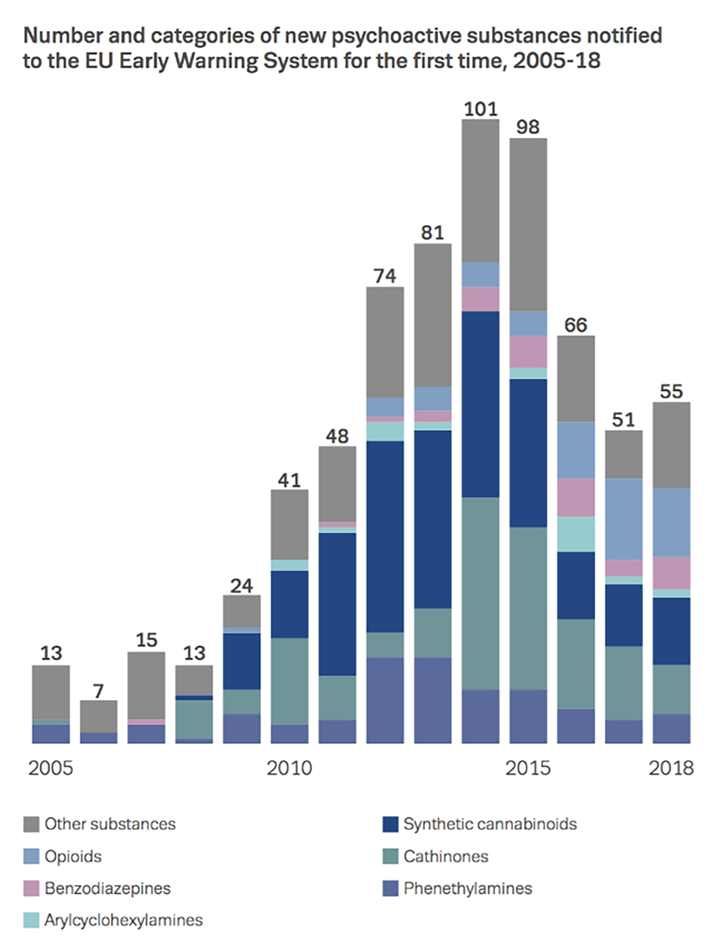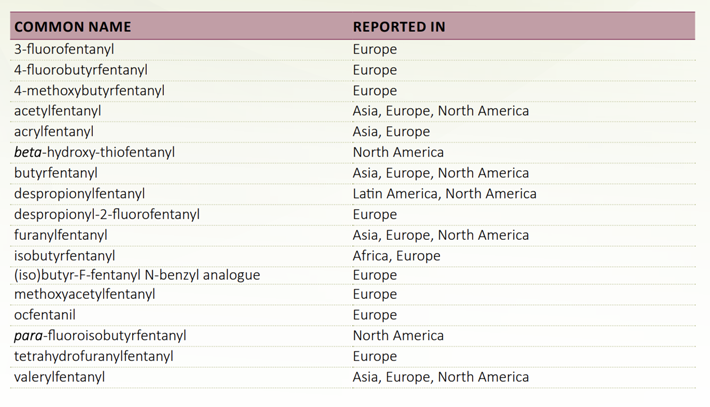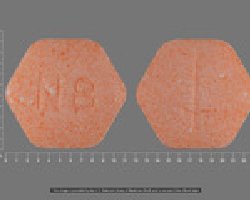Why Synthetic Drugs Might be the Deadliest, Most Damaging Drugs in the World

In 1988, a University of California professor wrote, “it is likely that the future drugs of abuse will be synthetics rather than plant products.” He knew then what the rest of us have only learned a few decades later: the manufacture and trafficking of synthetic drugs was destined to become a vast, lucrative and incredibly deadly industry. It’s only been in the last several years that we have realized how true this prediction was.
Here are some key facts you should know about synthetic drugs.
What are synthetic drugs?
Unlike drugs like opium, morphine, cocaine or marijuana, synthetic drugs are not derived from plants. They are created in laboratories. Some, like pharmaceutical fentanyl, have medical uses. But in the last decade, hundreds of new synthetic drugs of all types have been found on the illicit drug market. Chemists, drug trafficking organizations and drug dealers have recognized that there are massive profits to be made from these relatively inexpensive drugs and have capitalized on this opportunity.
The professor we quoted at the beginning of this article also created a new phrase to describe these drugs: designer drugs, defined as “substances where the psychoactive properties of a drug are retained, but the molecular structure has been altered to avoid prosecution.”
How long have synthetic drugs been around?
For decades. Early synthetic drugs include LSD, Ecstasy (MDMA), amphetamine and methamphetamine. Many of the newer synthetics found in America first made their appearance in Europe, according to the European Monitoring Centre for Drugs and Drug Addiction (EMCDDA). In 2009, the number of these new psychoactive substances (NPS) began to increase and then skyrocket as you can see in the infographic below from the EMCDDA.

Many of the newer NPS are cannabinoids, sold as synthetic marijuana or Spice, or cathinones often sold as bath salts, which are chemically similar to a plant-based drug called khat. After 2015, the number of illicitly-manufactured, synthetic opioids found on the market in both Europe and America increased.
As reported by the United Nations Office on Drugs and Crime, the list of new synthetic opioids on the market includes many analogues of fentanyl. An analogue is a chemically-similar drug but may not yet have been outlawed. As pointed out by Professor Henderson, the shift in its molecular composition only occurred to circumvent drug laws.
The following chart appears in the UNODC’s report Fentanyl and its Analogues – 50 Years On. Here, you can see some of the many illicit fentanyl variations and where they have been found.

Why are synthetic drugs so popular?
They are popular with drug trafficking organizations because they can often be created and sold as legal substances. Here’s how it works.
Fentanyl is a powerful medical painkiller. It is not legal to manufacture, traffic or sell this drug illicitly so law enforcement personnel can seize the drug and arrest those who make it, move it or sell it. But if you modify the molecule slightly, you can produce a fentanyl analogue. It takes time for laws to change so until that time, drug dealers can legally sell this new form of the drug.
As soon as that new drug is banned, chemists simply shift the formula again and create a new analogue. Law-making bodies are continually playing catch-up. Some states and countries have passed “analogue laws” that state that all drugs that are chemically similar to banned drugs can be seized. But in regions where analogue laws don’t exist, chemists and drug dealers are free to traffic in these newly modified substances.
Synthetic drugs are also popular with drug trafficking organizations because they can be created anywhere a lab can be built and precursor chemicals can be obtained. This means that these drugs can be manufactured in any region and therefore may not need to be trucked across international borders.
They are popular with some drug users because they are cheap, new and readily available. Some of them may not show up on drug tests until drug tests are updated. Or maybe never.
Not all drug users like them, however, because of their unpredictable strengths and effects.
Why are they so dangerous?
When a person arrives in an emergency room suffering from the effects of one of these drugs, it can be difficult or even impossible for ER staff to determine which drug is creating the problem. The shift of just a few molecules can turn a non-deadly drug into a deadly one. The effects of a drug referred to as MPTP provides an example.
In the early 1980s, chemists in clandestine labs created MPPP, a synthetic analogue to meperidine, an opioid painkiller often sold as Demerol. Drug dealers promoted this product as “synthetic heroin.” But at least one chemist made a serious mistake while synthesizing MPPP. Instead of producing MPPP, he produced MPTP, a highly toxic drug.
Some MPTP users immediately developed full-blown symptoms of Parkinson’s Disease. But they were in the wrong age ranges to develop the disease and Parkinson’s does not show up overnight. Researchers and law enforcement were eventually able to trace the condition back to this erroneous process in the lab. But it took time and in that time, at least two people died.
A person in an emergency room suffering from catatonia or seizures resulting from a synthetic drug that has just hit the illicit market may mystify emergency room staff trying to save his or her life. Drug tests may not even reveal which drug was taken, if it is so new that it doesn’t register on any tests. This makes experimentation with synthetic drugs extremely dangerous.
What other harmful effects can these drugs create?
As compiled by the National Institute on Drug Abuse, their effects include the following:
- Psychosis
- Extreme anxiety
- Confusion
- Paranoia
- Hallucinations
Synthetic cathinones (bath salts):
- Paranoia
- Hallucinations
- Panic attacks
- Increased sexuality
- Delirium that can escalate to muscle breakdown and death
Ecstasy/MDMA/Molly:
- Irritability
- Depression
- Anxiety
- Memory problems
- Serious rise in body temperature
- Death from organ breakdown
- After repeated use, decreased interest and pleasure from sex
Fentanyl and its analogues:
- Euphoria
- Nausea
- Confusion
- Constipation
- Sedation
- Slowed breathing
- Unconsciousness
- Death
Making and selling illicit synthetic drugs is such a lucrative industry that there is little doubt it is here to stay. This fact makes it doubly important to find rehabilitative help for anyone who can’t maintain their own sobriety so they can avoid these damaging and even deadly substances.
Sources:
- Source of the professor’s quote: University of California, Davis pharmacology professor Gary Henderson, quoted in Fentanyl, Inc, How Rogue Chemists are Creating the Deadliest Wave of the Opioid Epidemic by Ben Westhoff. Kindle version, Atlantic Monthly Press, 2019.
- http://clinchem.aaccjnls.org/content/65/2/242
- http://www.emcdda.europa.eu/system/files/publications/2755/att_212354_EN_EMCDDA_POD_2013_Synthetic%20drug%20production.pdf
- https://www.narconon.org/drug-abuse/signs-symptoms-bath-salts.html
- https://www.narconon.org/drug-abuse/khat-effects.html
- https://www.unodc.org/documents/scientific/Global_SMART_Update_17_web.pdf
- https://www.sciencedirect.com/topics/neuroscience/mpp
- https://www.cdc.gov/mmwr/preview/mmwrhtml/00000360.htm
- https://www.drugabuse.gov/publications/drugfacts/synthetic-cannabinoids-k2spice
- https://www.drugabuse.gov/publications/drugfacts/synthetic-cathinones-bath-salts
- https://www.ncbi.nlm.nih.gov/pmc/articles/PMC3088378/
- https://www.drugabuse.gov/publications/drugfacts/mdma-ecstasymolly
- https://www.drugabuse.gov/publications/drugfacts/fentanyl


 ®
®